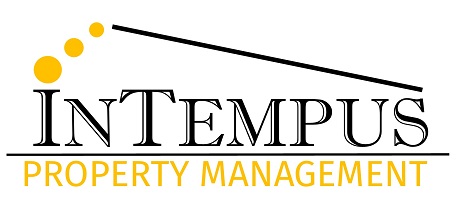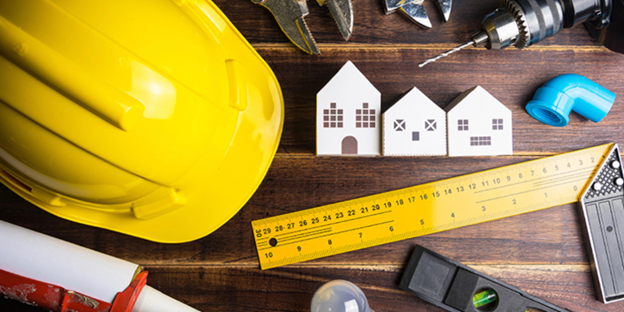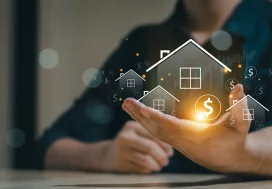Preventative maintenance is crucial in property management, ensuring the longevity, safety, and value of properties. It involves regular inspections, timely repairs, and proactive measures to prevent potential issues from escalating. This approach not only protects the property but also enhances tenant satisfaction and reduces overall maintenance costs. Understanding the significance of preventative maintenance, exploring the latest trends and keywords, and implementing effective strategies can greatly benefit property managers.
The Essential Role of Preventative Maintenance
Preventative maintenance is vital for several reasons:
- Cost Savings: Regular maintenance can prevent minor issues from escalating into costly repairs. By addressing problems early, property managers can avoid expensive emergency repairs and extend the lifespan of building systems and components. Studies indicate that preventative maintenance can save up to 18% on repair costs compared to reactive maintenance.
- Safety and Compliance: Ensuring that all property systems, such as electrical, plumbing, and HVAC, are functioning correctly helps maintain a safe environment for tenants. Regular inspections and maintenance also ensure compliance with local building codes and regulations, reducing the risk of legal issues and enhancing the property’s safety standards.
- Tenant Satisfaction: A well-maintained property attracts and retains tenants. Regular upkeep and prompt repairs demonstrate a commitment to tenant welfare, leading to higher tenant satisfaction and reduced turnover rates. Satisfied tenants are more likely to renew their leases and recommend the property to others.
- Property Value: Consistent maintenance preserves and enhances the value of the property. Well-maintained properties are more attractive to potential buyers and can command higher rental rates. Preventative maintenance helps maintain the property’s aesthetics and functionality, contributing to its long-term value.
Key Components of an Effective Maintenance Plan
Developing a successful preventative maintenance plan involves several key components.
- Regular Inspections: Conduct routine inspections of all property systems and components to identify potential issues. This includes inspecting roofs, plumbing, electrical systems, HVAC units, and common areas.
- Scheduled Maintenance: Create a maintenance schedule that outlines specific tasks and their frequency. This can include tasks like changing HVAC filters, inspecting fire safety equipment, and cleaning gutters.
- Proactive Repairs: Address minor issues promptly before they escalate into major problems. This includes fixing leaks, repairing damaged fixtures, and replacing worn-out components.
- Record Keeping: Maintain detailed records of all inspections, maintenance tasks, and repairs. This documentation helps track the property’s maintenance history and can be useful for future reference and compliance audits.
- Use of Technology: Leverage property management software and mobile apps to streamline maintenance processes, schedule tasks, and track work orders. Technology can also provide valuable data insights for predictive maintenance.
Latest Trends in Property Maintenance
Staying updated with the latest trends in property maintenance is essential for effective management. Predictive maintenance, which uses data analytics and IoT devices to predict when maintenance is needed, is becoming increasingly popular. Smart building technology integrates automated systems for efficient building management, while sustainable maintenance practices focus on eco-friendly methods to reduce environmental impact.
Mobile maintenance management allows property managers to handle tasks and communicate with technicians in real-time using mobile apps. Tenant portals provide a digital platform for tenants to report issues and track the status of their maintenance requests, enhancing transparency and tenant satisfaction.
Implementing an Effective Strategy
To develop and implement a robust preventative maintenance strategy, property managers should conduct a thorough assessment of the property to identify all maintenance needs and create a comprehensive maintenance plan. Allocating a budget for preventative maintenance activities and ensuring that maintenance staff are well-trained are crucial steps.
Fostering open communication with tenants regarding maintenance schedules and procedures encourages them to report issues promptly. Regularly reviewing the effectiveness of the maintenance plan by tracking key performance indicators (KPIs) such as maintenance costs, downtime, and tenant satisfaction helps in making informed adjustments to the strategy.
Practical Tips for Effective Preventative Maintenance
- Develop a Comprehensive Maintenance Schedule: Outline all necessary maintenance tasks and their frequency. Include seasonal tasks such as winterizing pipes and inspecting HVAC systems before the summer.
- Utilize Checklists: Create checklists for routine inspections and maintenance tasks to ensure consistency and thoroughness. This helps in maintaining standards and avoiding oversight.
- Engage Professional Services: For complex systems like HVAC or electrical, consider hiring professional services for regular inspections and maintenance. Professionals have the expertise to identify issues that may not be apparent to untrained staff.
- Monitor Building Systems: Use IoT devices to monitor critical building systems such as HVAC, plumbing, and electrical. These devices can provide real-time data and alerts for potential issues, enabling timely interventions.
- Foster a Maintenance Culture: Encourage tenants to report issues promptly and engage in preventive practices. Educate them on the importance of maintenance for their safety and comfort.
- Regularly Review and Update the Maintenance Plan: Maintenance needs can change over time due to wear and tear or upgrades. Regularly review and update the maintenance plan to reflect current needs and conditions.
Sustainable Maintenance Practices
Sustainable maintenance practices focus on reducing environmental impact and promoting long-term sustainability. These practices are increasingly important as tenants and regulatory bodies demand greener building operations.
- Eco-Friendly Materials: Using sustainable materials for repairs and renovations can reduce the environmental footprint. This includes using low-VOC paints, recycled building materials, and energy-efficient appliances.
- Water Conservation Techniques: Implementing water-saving technologies such as low-flow fixtures, smart irrigation systems, and rainwater harvesting can significantly reduce water usage and costs.
- Energy Efficiency Upgrades: Upgrading to energy-efficient lighting, HVAC systems, and insulation can reduce energy consumption and improve the building’s overall efficiency. These upgrades not only lower utility bills but also enhance tenant comfort.
Benefits of technology in Maintenance
Embracing technology in maintenance significantly enhances the efficiency and effectiveness of property management programs. One of the primary benefits is automated scheduling, which ensures that routine tasks are not overlooked. By automating these schedules, property managers can guarantee that all necessary maintenance activities are performed on time, reducing the risk of neglect and subsequent damage to property systems.
Advanced analytics provide profound insights into maintenance trends, enabling property managers to predict and prevent potential issues. By analyzing data from various sources, such as sensor readings, maintenance logs, and historical performance data, managers can identify patterns that suggest emerging problems. This predictive capability allows for proactive maintenance, addressing issues before they escalate into more significant problems that could disrupt operations and incur higher costs.
Improved communication through digital platforms ensures that property managers, maintenance staff, and tenants remain well-informed and aligned. These platforms facilitate seamless information exchange, allowing managers to disseminate updates, assign tasks, and receive feedback quickly. Enhanced communication reduces misunderstandings and ensures that everyone involved in the maintenance process has access to the necessary information.
Integrating technology in maintenance not only optimizes operational efficiency but also contributes to higher tenant satisfaction. Tenants benefit from quicker response times to maintenance requests and better communication regarding the status of their requests. This responsiveness and transparency foster a positive tenant experience, which can lead to higher tenant retention rates and a more favorable reputation for the property management company.
Data Analytics for Predictive Maintenance
Predictive maintenance leverages data analytics to determine the optimal time for performing maintenance tasks, using historical data and machine learning algorithms to forecast equipment failures. This proactive approach allows property managers to plan maintenance activities based on actual needs, thereby reducing downtime and extending the lifespan of equipment.
Machine learning algorithms play a crucial role in predictive maintenance by analyzing historical maintenance data to identify patterns and predict future failures. These algorithms can process vast amounts of data to find correlations and trends that human analysts might overlook. By understanding these patterns, property managers can schedule maintenance activities more effectively, addressing potential issues before they result in significant equipment downtime or failure.
Big data analytics enhances this process by aggregating data from multiple sources, providing a comprehensive view of equipment performance and maintenance needs. This aggregated data can reveal common issues and trends, helping property managers make informed decisions about maintenance strategies and investments. For instance, data from sensors, maintenance logs, and external databases can be combined to provide a detailed picture of an asset’s health and operational efficiency. This holistic view enables property managers to prioritize maintenance tasks, allocate resources more efficiently, and implement more effective maintenance schedules.
Predictive maintenance represents a significant advancement in property management, combining the power of machine learning algorithms and big data analytics to optimize maintenance activities. By shifting from reactive to proactive maintenance strategies, property managers can enhance the reliability and efficiency of their building systems, ultimately improving tenant satisfaction and property value.
Enhancing Communication with Tenants
Effective communication with tenants is essential for identifying maintenance issues early and ensuring tenant satisfaction.
- Tenant Education: Educating tenants on how to identify and report maintenance issues can help catch problems early. Providing information on proper use of appliances and systems can also prevent misuse and reduce maintenance needs.
- Feedback Mechanisms: Implementing feedback mechanisms such as surveys and suggestion boxes can provide valuable insights into tenant concerns and areas for improvement. Regularly reviewing and acting on this feedback demonstrates a commitment to tenant satisfaction.
How Intempus Excels in Preventative Maintenance
At Intempus Property Management, we prioritize preventative maintenance to ensure the longevity and value of the properties we manage. Our approach includes integrating advanced technologies like IoT and data analytics to predict and address maintenance needs proactively. By using smart sensors, we monitor property systems in real-time, ensuring timely interventions that prevent costly repairs.
Our commitment to sustainable practices includes using eco-friendly materials and implementing energy-efficient upgrades, which not only reduce environmental impact but also enhance tenant comfort and reduce operational costs. We leverage mobile technology to streamline maintenance tasks and improve communication among our team and with tenants, ensuring that maintenance issues are addressed promptly and efficiently.
Conclusion
Preventative maintenance is a critical aspect of property management that ensures the longevity, safety, and value of a property. By implementing a comprehensive maintenance plan, leveraging technology, and fostering open communication with tenants, property managers can effectively prevent issues, reduce costs, and enhance tenant satisfaction. At Intempus Property Management, we are dedicated to providing top-notch maintenance services and innovative solutions to help property owners maximize the value of their investments.
For more information on how we can assist with your property management needs, visit our Property Management Services page. To understand why Intempus stands out in the industry, check out Why Intempus. For further assistance and more information on how we can assist with your property management needs, please reach out through our Contact Us page.






